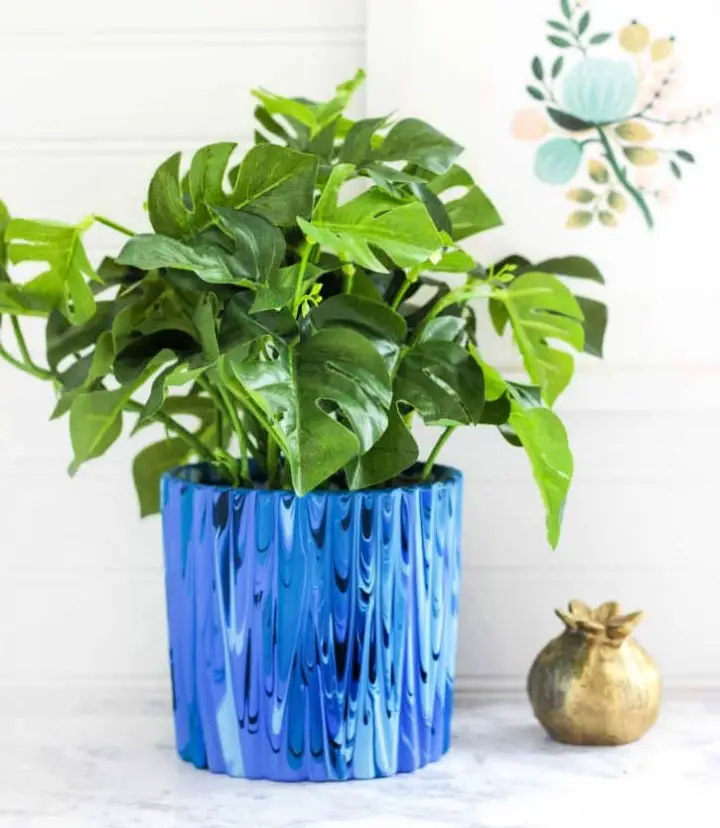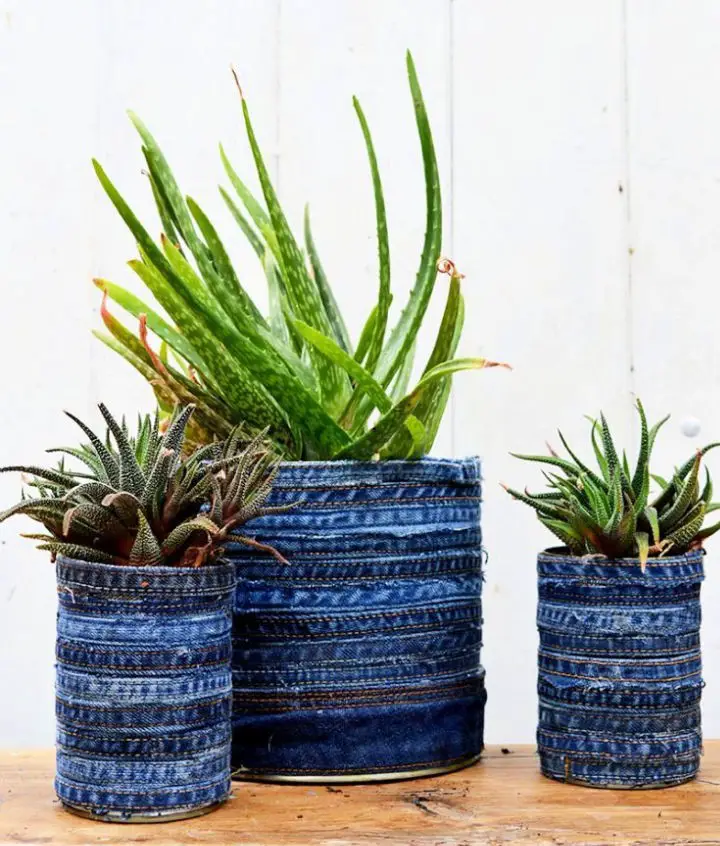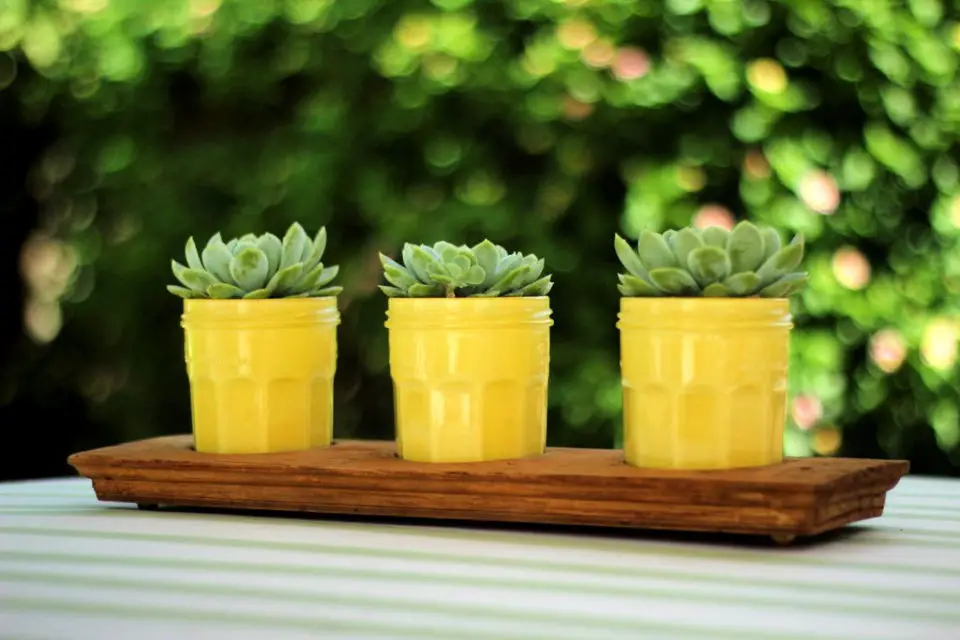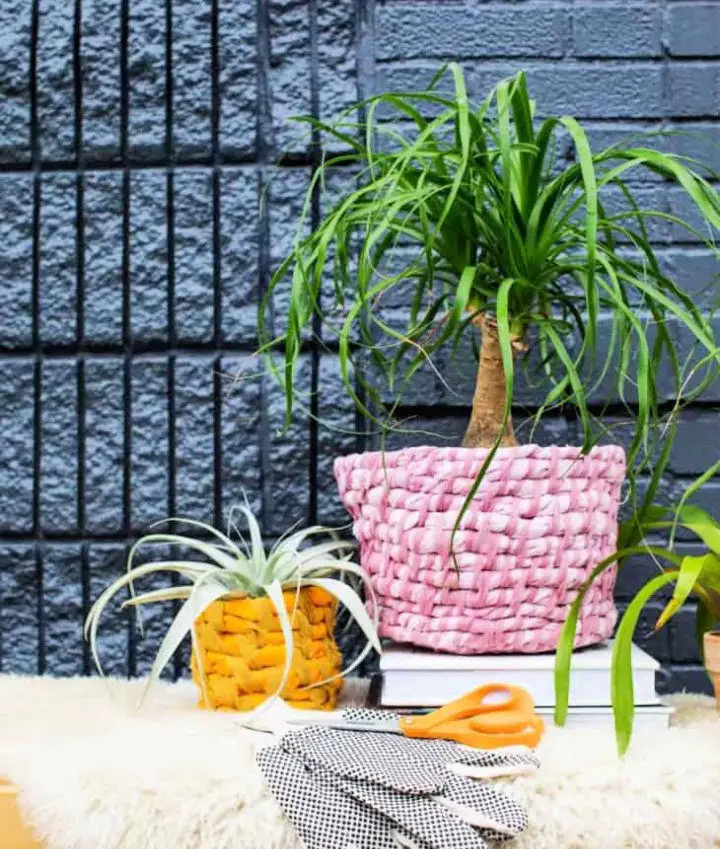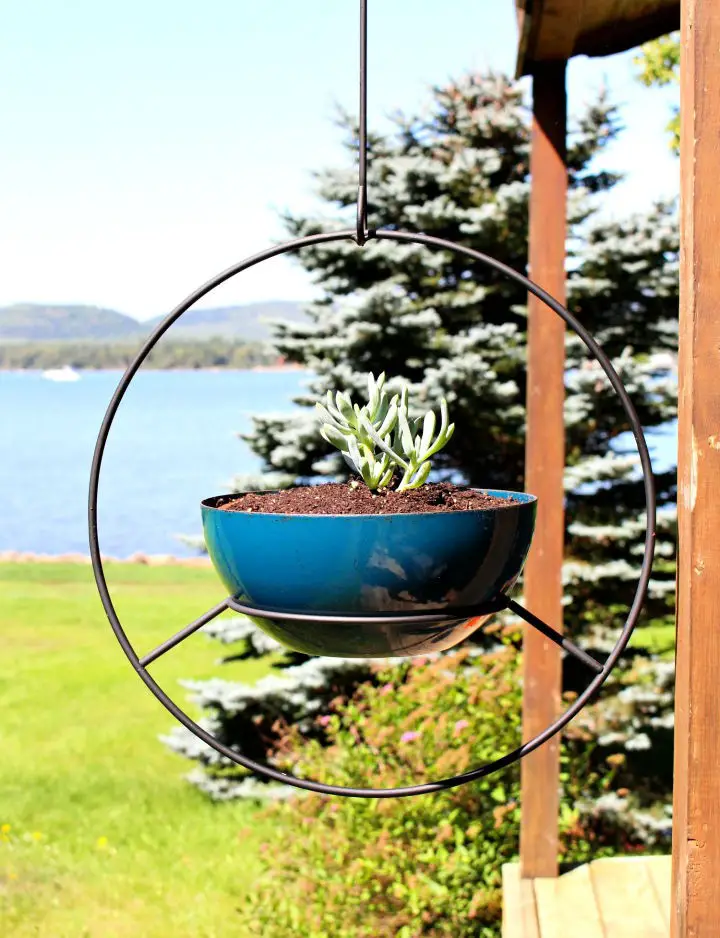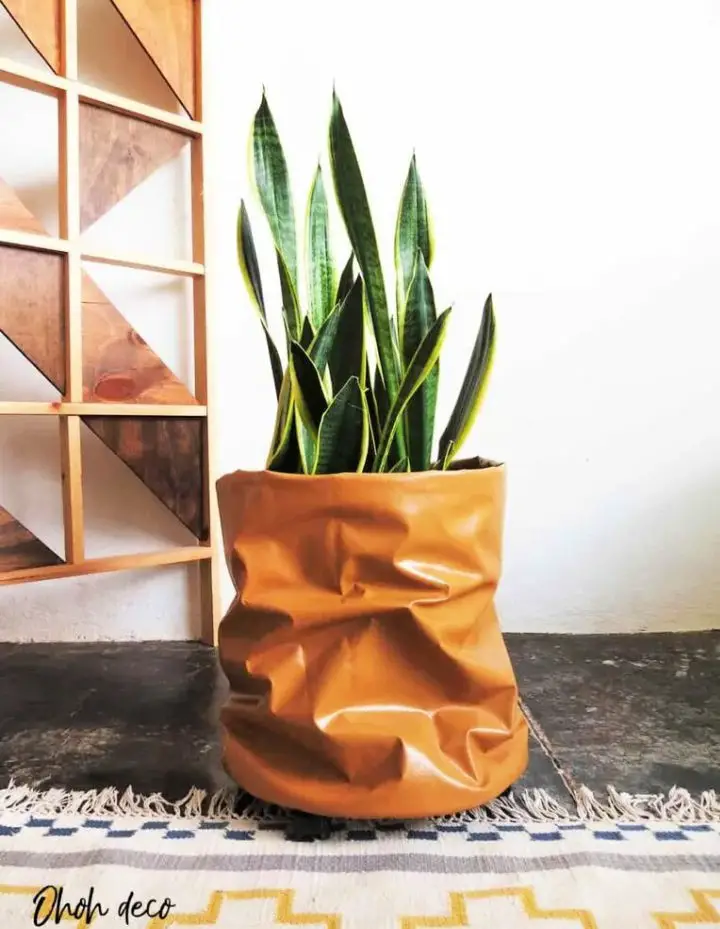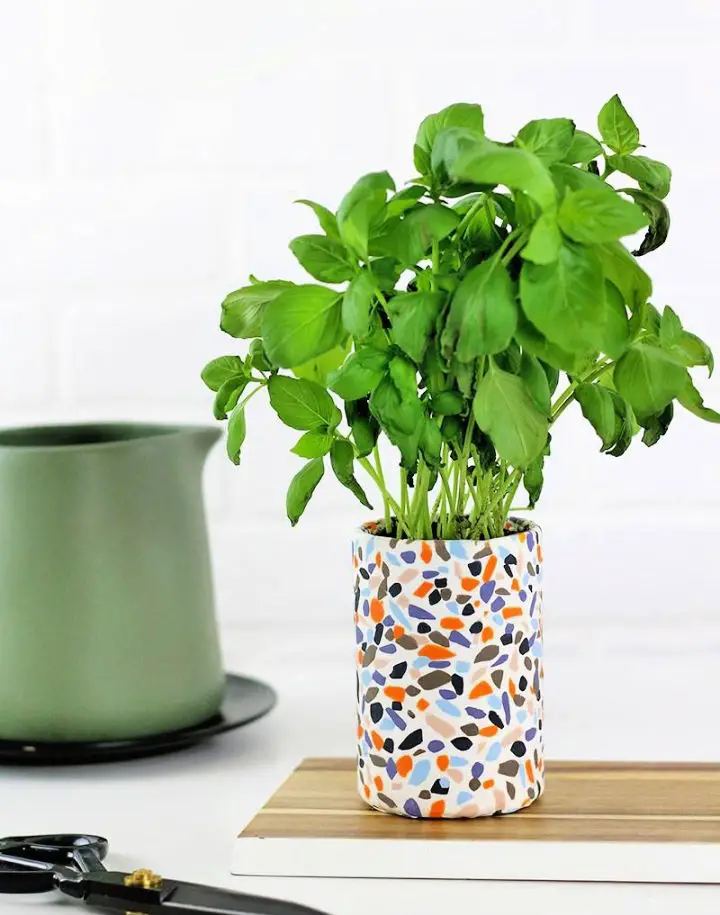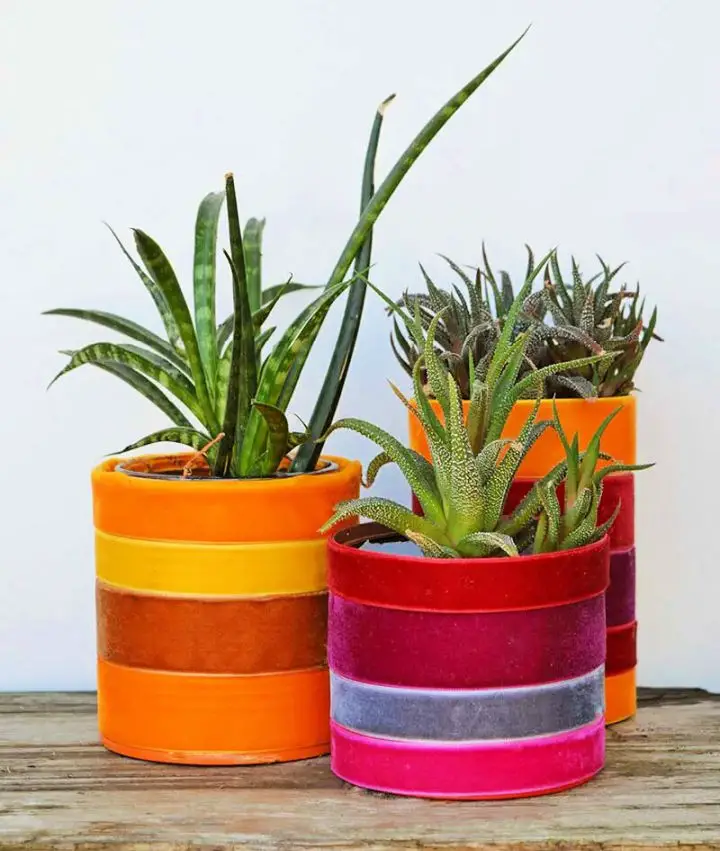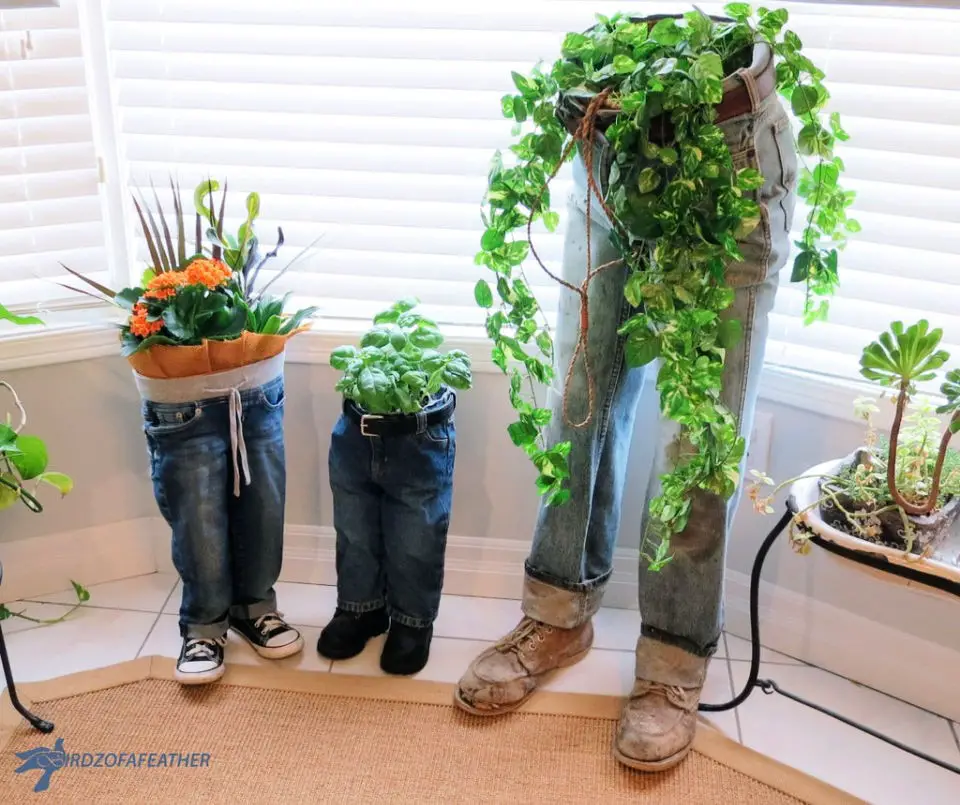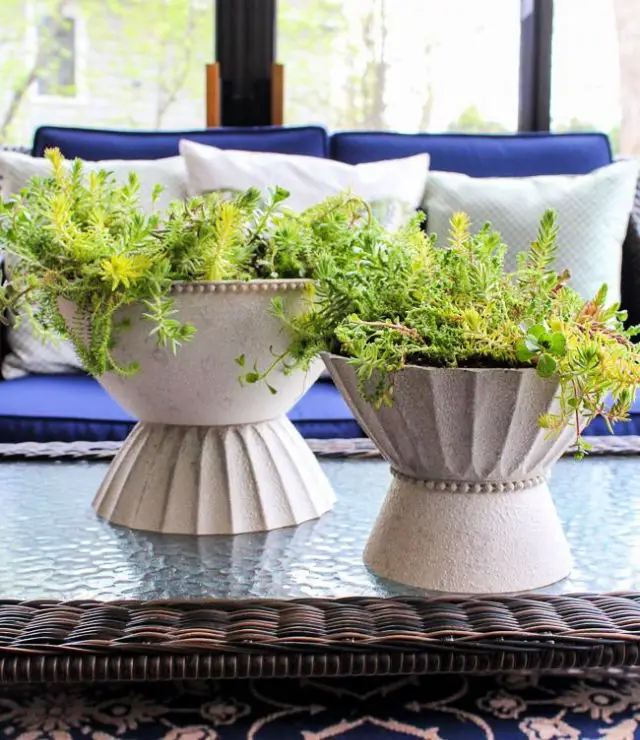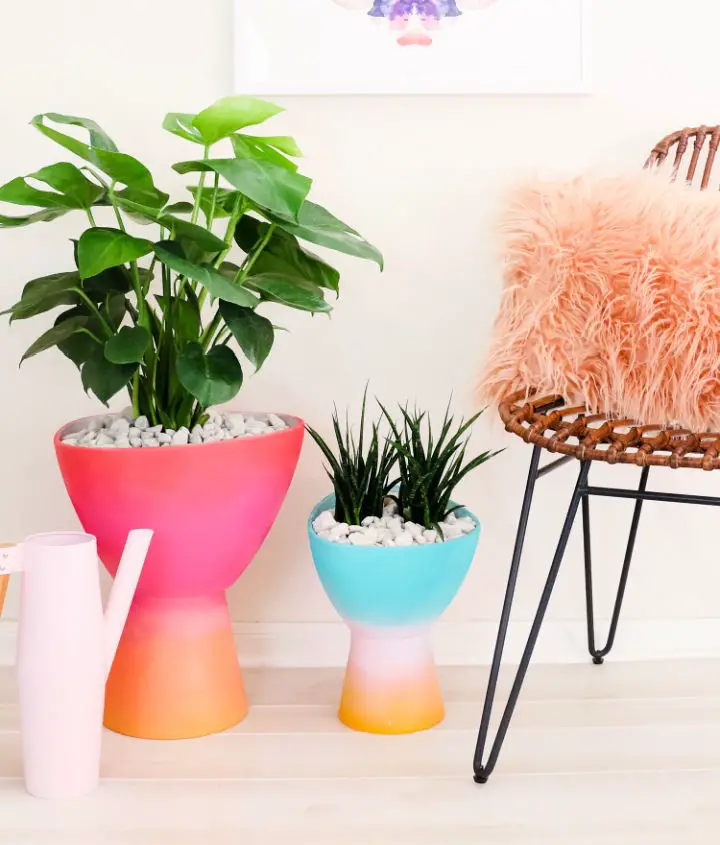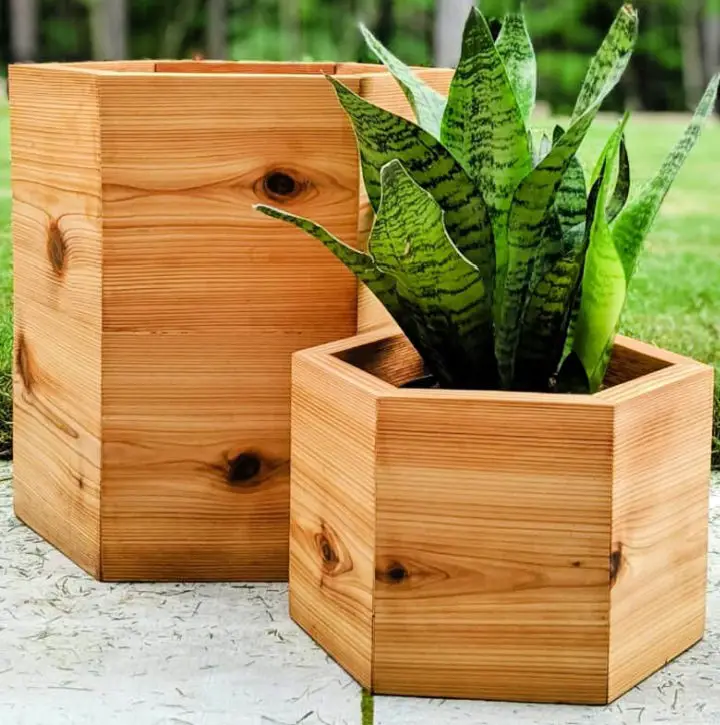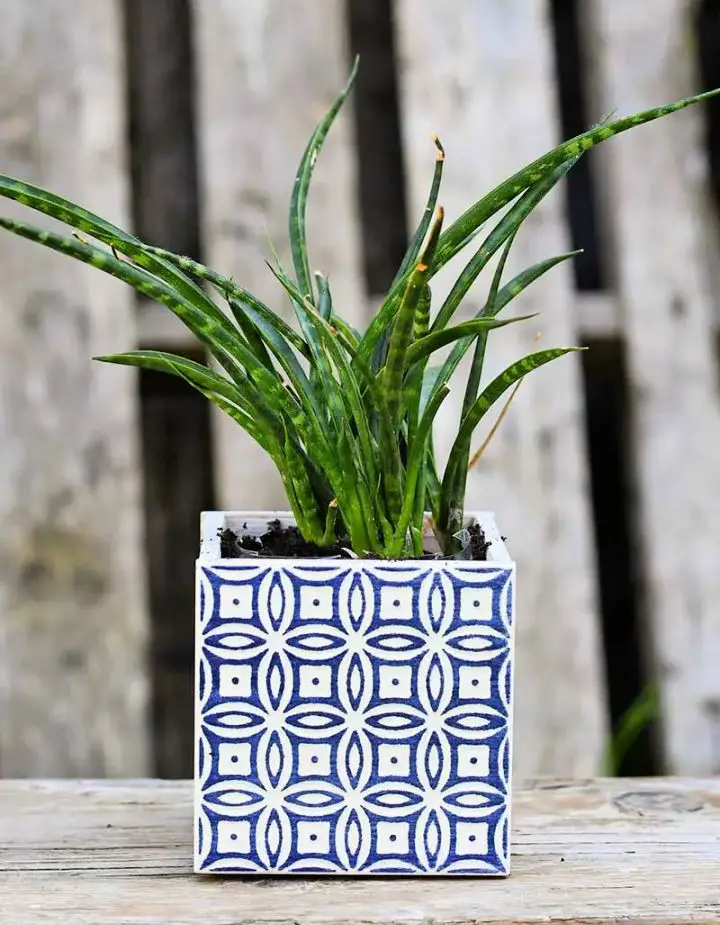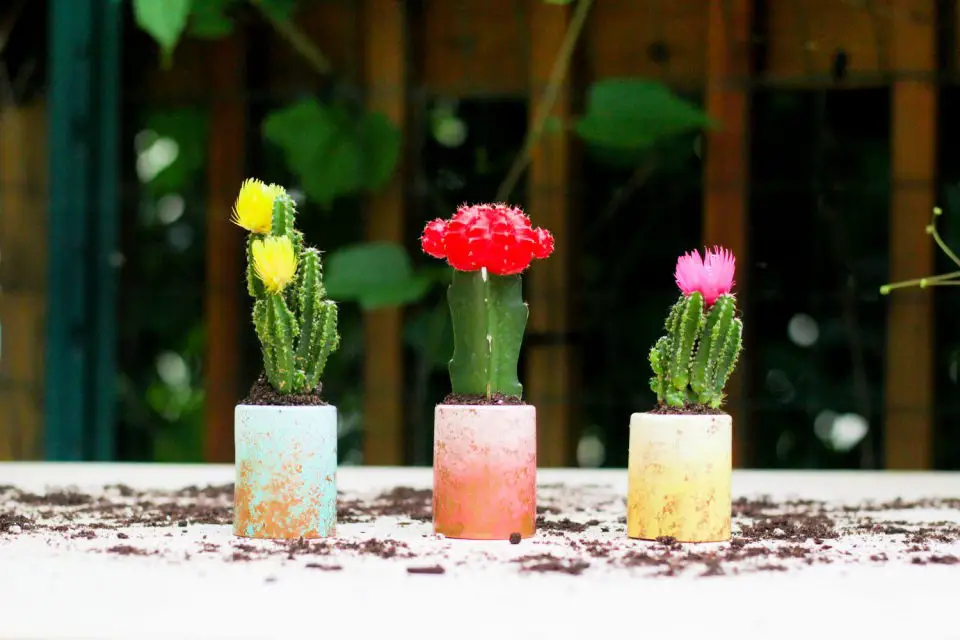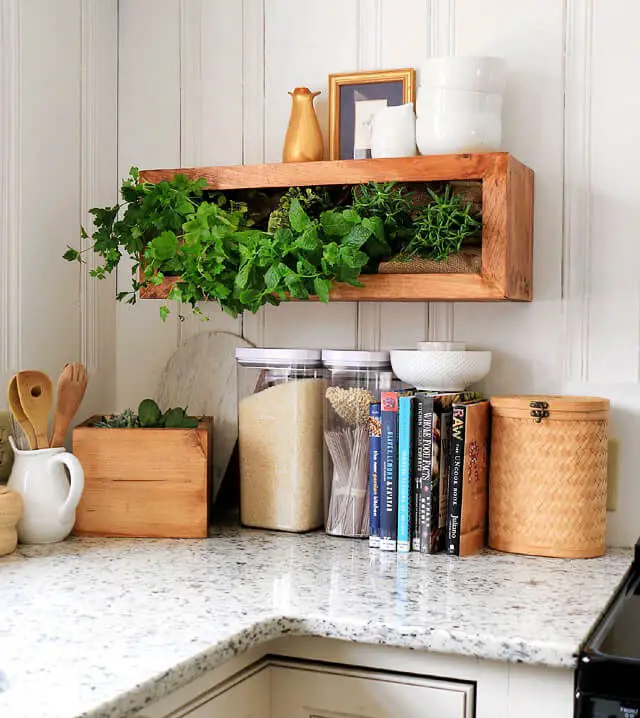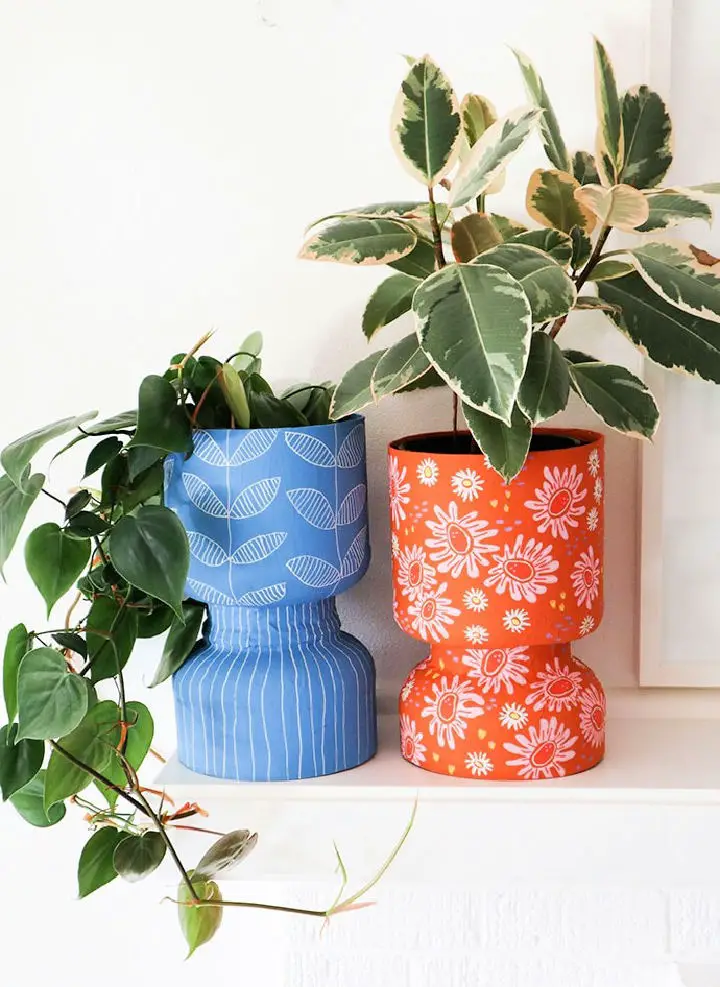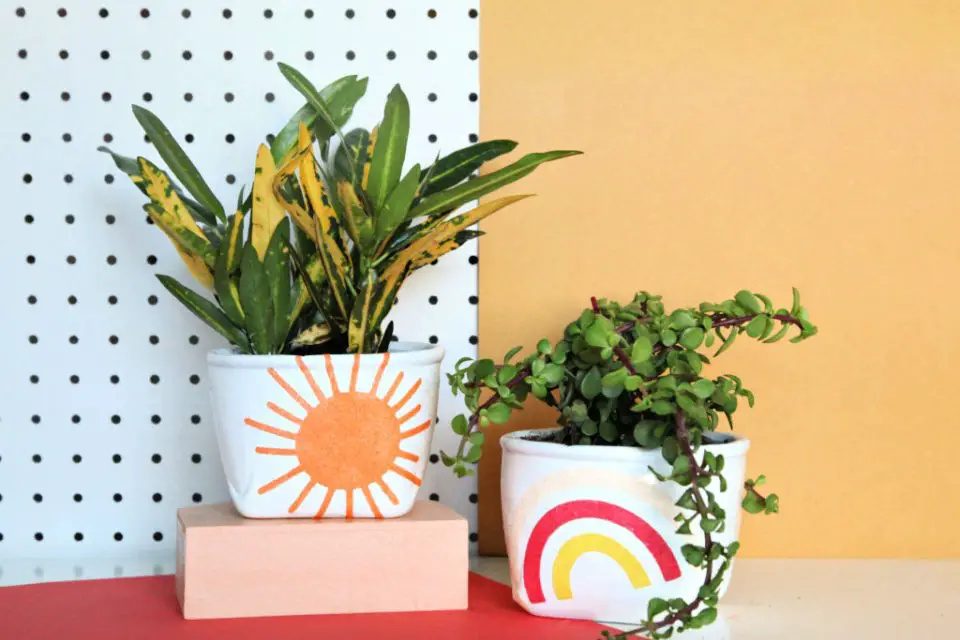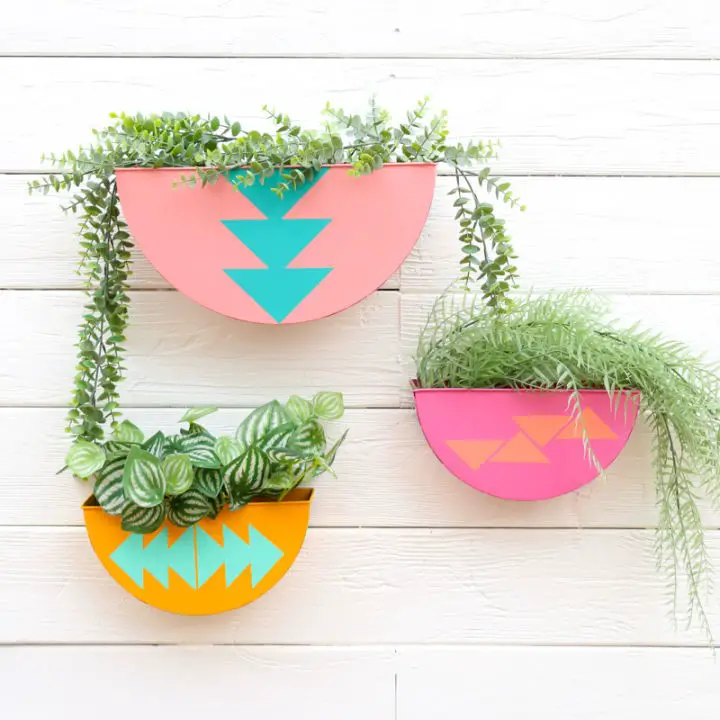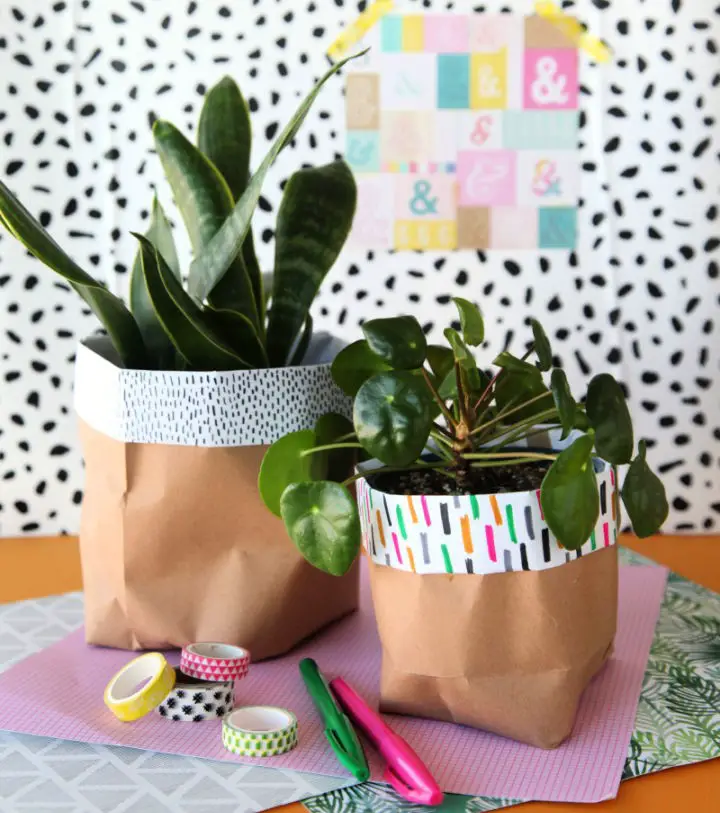Why Choose DIY Planters?
When it comes to creating DIY planters, the rewards far outweigh the effort. Not only do you get to enjoy a cost-effective and eco-friendly approach, but you also gain complete control over customization, tap into therapeutic benefits, and discover new skills. Plus, handmade planters make unique gifts that showcase your creativity and personal touch.The materials required for DIY planter projects are often readily available at home or can be sourced at a low cost, making this approach significantly more budget-friendly than buying new planters from stores. Additionally, many creative solutions involve upcycling old items like jeans, tin cans, and plastic tubs, which not only reduces waste but also promotes sustainability.The real magic of DIY planters lies in their customizability. You can create planters that perfectly match your decor and personal aesthetic preferences, giving you a sense of pride and accomplishment. And let’s not forget the therapeutic benefits – the process of making something with your own hands can be incredibly calming and stress-reducing.Of course, DIY planters also make for thoughtful and unique gifts that show effort and creativity. And as an added bonus, engaging in these projects can help you develop new skills or refine existing ones.By incorporating DIY planters into your home, you’ll not only beautify your space but also enrich your lifestyle with a host of benefits that extend far beyond the initial project itself.
How to Make Planters
Creating personalized concrete mini planters is an engaging DIY adventure that breathes new life into discarded plastic containers, transforming them into functional art pieces for your home. Inspired by Becky Stern’s innovative approach, this step-by-step guide will walk you through the process of crafting your own unique concrete mini planters.
Materials Needed
To create your very own mini indoor garden, you’ll need the following materials: old plastic containers such as juice bottles or film containers, a mix of concrete, water, a piece of a drinking straw, glue suitable for bonding plastic together, chopsticks, and mold release spray if desired. To add some visual appeal, gather gravel and pretty sand for decoration. Finally, you’ll need succulent soil and the succulents themselves to bring your miniature garden to life.
Step 1: Prepare Your Molds
To get started, select and resize your plastic containers to the desired dimensions. These will serve as the outer molds for your planters. For the inner mold, which creates the space for the plant, you can utilize smaller plastic containers, such as old film containers or cosmetic bottles, trimmed down to size.
Step 2: Ensure Drainage
When crafting self-watering planters, it’s crucial to include a drainage mechanism to prevent waterlogged soil and promote healthy root growth. One effective way to achieve this is by attaching a section of a drinking straw to the underside of your outer mold or shell. This will create a small hole at the bottom of the planter once the concrete or aggregate has fully set, allowing any excess water to escape and preventing it from accumulating in the soil.
Step 3: Assemble Your Molds
To assemble the drinking straw, start by securing the inner mold within the outer one. Achieve this by attaching chopsticks to both molds using a strong adhesive. Ensure that the inner mold is properly aligned with the center of the outer mold through the use of these strategically placed chopsticks.
Step 4: Prepare Your Concrete
When crafting your own planters, achieving a smooth finish is crucial. To achieve this, be sure to sift out any excess gravel from your concrete mixture before combining it with water. Aim for a consistency that’s thick yet still pourable. If you find yourself with too much water added, simply rectify the issue by mixing in more concrete until you reach the desired texture.
Step 5: Fill Your Molds
To ensure a smooth casting process, meticulously fill each mold with concrete, making sure they reach the same height. Place the molds on a flat surface, allowing them to cure undisturbed. If you have access to a vibrating palm sander without sandpaper, utilize it to gently vibrate the molds and eliminate any air pockets that may have formed.
Step 6: Unmold Your Planters
Once the 24-hour mark has passed, it’s time to carefully extract your concrete planters from their molds. This process requires a gentle touch, as the plastic can be brittle and prone to breaking unexpectedly. If the plastic proves to be stubbornly resilient, you may need to employ some power tools to help dislodge the planters from their molds.
Step 7: Finishing Touches
When handling delicate planters, it’s crucial to capitalize on the optimal moment – when they’re still slightly damp. This allows you to effortlessly smoothen out any rough edges or ridges that might have formed during manufacturing. Moreover, in the event of minor breakage, simply permit the separated pieces to dry thoroughly and utilize a reliable construction adhesive for seamless repairs, ensuring your planters remain sturdy and intact.
Step 8: Plant Your Succulents
To create a visually appealing and well-draining succulent planter, begin by adding a thin layer of gravel at the bottom. This will allow excess water to escape, preventing root rot. Next, gently place your chosen succulent into the planter, followed by a generous amount of succulent-specific soil. Use your fingers or the back of a spoon to pack the soil firmly around the roots, ensuring they’re securely anchored. Finally, add a decorative touch with a layer of gravel and a sprinkle of pretty sand on top.
Video Tutorial
While Becky Stern’s YouTube video provides a comprehensive step-by-step visual guide to making these unique concrete mini planters, the written instructions offer a more in-depth look at the creative process. By following this visual guide and the accompanying written steps, you’ll be able to recreate the beautiful and custom concrete planters that add a personal touch to any space. Whether you’re just starting out with concrete projects or have experience working with the material, this DIY endeavor is an excellent way to express your creativity and enjoy the satisfaction of creating something with your own hands.
FAQs on DIY Planter
Delve into the world of DIY planters, where creativity meets horticulture. Curious about the process of crafting and maintaining these charming containers? We’ve got you covered, with in-depth answers to frequently asked questions that cater to gardening enthusiasts of every skill level.
What are DIY Planters?
Handcrafted DIY planters offer a unique and personalized way to grow your favorite plants. These creative containers can be made from an array of materials, such as repurposed items, natural woods, sturdy concretes, or durable plastics, allowing you to put your own twist on gardening spaces. By using unconventional materials, you’re not only adding a touch of personality to your outdoor area but also reducing waste and promoting sustainability.
Are DIY Planters Suitable for Beginners?
For those just starting out in the world of DIY planters, there’s no better place to begin than with the simplest of projects. By exploring the realm of basic designs and readily available materials, newcomers can quickly gain confidence and develop their skills, making them an ideal introduction to both gardening and crafting endeavors.
How to Choose the Right Plants for DIY Planters?
When selecting plants for your planter, consider the sunlight levels in the area where it will be placed. This is crucial to ensure the plants receive the right amount of light to thrive. In addition to lighting conditions, make sure the planter can accommodate the mature size of each plant. You wouldn’t want a tiny succulent getting crowded out by a sprawling vine, for instance. Another important factor is watering needs – group plants together that require similar amounts of moisture to simplify your care routine.
Can DIY Planters Be Used Indoors and Outdoors?
When it comes to designing DIY planters, you have the flexibility to create functional pieces for both indoor and outdoor spaces. Crucial to this endeavor is selecting materials and plants that are well-suited to their respective environments, ensuring a successful outcome in each scenario.
What are Some Creative DIY Planter Ideas?
Transforming ordinary objects into extraordinary planters can add a touch of creativity to your home decor. One way to do this is by upcycling containers from old boots, kitchenware, or toys. Simply clean and disinfect the items, then use them as unique planters for small plants or herbs. For a more rustic look, consider converting wooden pallets into vertical or horizontal planters. The natural wood grain and industrial feel can add a lot of character to your space. If you want to go for a sleeker look, try molding concrete into unique shapes that reflect your personal style. From geometric patterns to abstract designs, the possibilities are endless. By repurposing everyday objects into planters, you’ll not only be reducing waste but also creating one-of-a-kind pieces that showcase your creativity and personality.
How to Maintain DIY Planters?
When it comes to plant care, three essential practices are crucial for optimal growth and development. First, regular watering is vital, with the frequency and amount tailored to each plant’s unique needs and the local weather conditions. Next, proper drainage is vital to prevent waterlogging, which can be achieved by ensuring planters have adequate holes or gaps to allow excess moisture to escape. Finally, fertilization plays a key role in feeding plants what they need to thrive, with different types of plants requiring varying levels of nutrients depending on their growth stage and overall health.
Are DIY Planters Eco-Friendly?
By leveraging DIY planters, individuals can create an eco-friendly haven that not only beautifies their outdoor spaces but also promotes sustainability and reduces waste. One of the most effective ways to achieve this is by repurposing recycled or upcycled materials, thereby minimizing the environmental impact of traditional planter manufacturing processes.
Can DIY Planters be a Fun Family Activity?
Spending quality time with loved ones while nurturing creativity and greenery is a winning combination. Crafting DIY planters becomes an enjoyable family activity that not only fosters bonding but also introduces the joys of gardening and personalizes one’s living space.
How to Personalize DIY Planters for Gifts?
Elevate your gift-giving experience by incorporating personalized touches into your planters. One way to do this is through hand-painted designs, which allow you to customize with a wide range of colors and patterns that reflect the recipient’s style or preferences. For an added layer of uniqueness, consider adding names or messages using stencils or freehand techniques. This thoughtful gesture will make the gift even more special and meaningful. To further personalize your planters, consider tailoring them to the recipient’s interests or decor. Whether it’s a gardening enthusiast, a foodie, or a nature lover, there are countless ways to theme planters that will resonate with the individual receiving it.
What Safety Precautions Should I Consider for DIY Planters?
When embarking on a DIY planter project, it’s essential to prioritize safety and practicality. Start by protecting your hands with gloves, especially when working with rough or sharp materials that could cause injury. Additionally, be mindful of the weight of the planter, ensuring the installation site can support its load, particularly for hanging or wall-mounted options that may require more structural integrity. Furthermore, opt for safe and non-toxic materials when repurposing containers to avoid any potential harm to plants and humans alike. By following these guidelines, you’ll be well on your way to creating a unique and functional planter that enhances your gardening experience with a personal touch.
What materials can I use to make DIY plant pots?
Get creative with your DIY plant pot projects by repurposing a wide range of materials. From the humble to the innovative, here are some unconventional options to consider: plastic tubs and tin cans that have seen better days, old jeans and other fabric scraps that can be transformed into quirky planters, concrete blocks that can add an industrial touch, reclaimed wood planks that exude warmth and character, terracotta pots with their earthy charm, oven-bake clay that can be molded into unique shapes, and even recycled paper or cardboard that can be crafted into lightweight and eco-friendly planters.
How do I ensure my DIY plant pots have proper drainage?
When it comes to plant health, proper drainage is essential. To achieve optimal drainage in DIY plant pots, start by drilling holes in the bottom of your container if it doesn’t already have them. This simple step allows excess water to escape, preventing root rot and other issues that can harm your plants. Another effective method is to add a layer of pebbles or gravel at the bottom before adding soil. These materials are designed to facilitate drainage while also helping to regulate soil temperature and prevent moisture from pooling at the base of the pot. If you’re working with non-drillable materials, such as fabric pots, consider placing a plastic pot with built-in drainage inside for added peace of mind.
Can I make a self-watering DIY plant pot?
To create a self-watering plant pot, you’ll need two containers – one larger than the other. The smaller container will hold your plant’s soil and the larger one will be filled with water. The key is to connect these two containers using a wick, which can be made from a variety of materials such as rope or fabric strips. This wick should run from the smaller container where your plant’s roots will have access to it, allowing them to draw up water as needed. By designing your self-watering pot in this way, you’ll be able to provide consistent moisture for your plants without having to worry about overwatering or underwatering.
What are some eco-friendly options for DIY planters?
When it comes to creating eco-friendly DIY planters, think outside the box and consider alternative options that not only reduce waste but also promote sustainability. Here are a few innovative approaches: First, get creative with upcycling items you already have at home, such as plastic containers, cans, or even old shoes. This not only reduces the need for new materials but also adds a touch of personality to your planters. Next, opt for biodegradable materials like paper or fabric that can be easily composted after use. Finally, explore natural options like wood or clay that have been used in plant cultivation for centuries.
How can I decorate my DIY plant pots?
Transforming your DIY plant pots is an art form that can be achieved through various creative means. Painting is a straightforward approach, where you can use acrylic paint if the planter will be placed indoors and outdoor paint for outdoor installations. For a more eclectic look, decoupage involves applying fabric or paper designs using a glue-based sealant. Nature lovers can get creative by incorporating natural elements like stones, shells, or even moss to give your planters a rustic charm. Alternatively, stencils and stamps can be used to create patterns and designs with ease.
Can DIY plant pots be used indoors and outdoors?
When it comes to using DIY plant pots, one of the most significant factors to consider is their versatility. While many of these pots can be used both indoors and outdoors, it’s essential to take into account the material and decoration used. For outdoor use, look for materials that are naturally weather-resistant or have been treated to withstand the elements. This will help ensure your plants remain healthy and thriving in a variety of conditions. On the other hand, when using your DIY plant pot indoors, consider placing it on a protective surface or providing a tray to catch any water drips. By taking these simple precautions, you can enjoy your plants regardless of whether they’re situated inside or outside.
Are there any plants that are particularly well-suited to DIY planters?
When it comes to choosing plants for DIY planters, some species are better suited than others. Among these are succulents, which can thrive in a variety of container sizes and require minimal watering. Herbs are another great option, perfect for small indoor or outdoor planters where they can be easily monitored and cared for. For added color and vibrancy, annual flowers like petunias or marigolds can add a pop of color to simple DIY pots. If you’re looking to get more adventurous, consider planting small vegetables like cherry tomatoes or lettuce in larger containers. While these options are just the tip of the iceberg, they demonstrate the versatility and flexibility of DIY planters. To ensure success with your DIY planter project, remember that creativity is key, along with providing proper soil, water, and sunlight for your plants to flourish.
DIY Planters: 25 Homemade DIY Plant Pot Ideas to Make
Transform your outdoor space with innovative and easy-to-create DIY plant pot designs. Explore a diverse range of unique and inspiring projects that will take your gardening skills to the next level.
How to Make a Poured Paint Planter
Elevate your living space with the mesmerizing charm of a Poured Paint Planter, where creativity and color come together in perfect harmony. This innovative project is ideal for those who crave the beauty of gardening without the maintenance. By using artificial plants, you’ll enjoy a consistently vibrant appearance that’s easy to achieve. And the best part? Creating this planter is a breeze! Simply combine your favorite shades of blue acrylic paint with a ceramic planter and get ready to unleash your artistic side. For a comprehensive guide on how to craft your own poured paint masterpiece, head over to Purely Katie.
Making a Planter Out of Old Jeans
Elevate your home decor while embracing sustainability by transforming old jeans into a one-of-a-kind recycled jean planter. By leveraging the natural seams, hems, and waistbands of denim, you can create a unique vessel that showcases the rich indigo hues of the fabric. This DIY project not only breathes new life into discarded materials but also adds a touch of rustic charm when filled with succulents. With this simple guide from Pillarboxblue, you’ll discover an easy and innovative way to merge eco-friendliness with your interior design.
Mason Jar Planter With Reclaimed Wood Base
Transform your green space into an eco-friendly haven by combining the rustic charm of mason jar planters with reclaimed wood bases. This DIY guide is perfect for those seeking a unique and sustainable way to add some personality to their home or office. By repurposing old wood, not only will you create one-of-a-kind planters but also contribute to reducing waste and promoting environmental stewardship. With its simplicity and engaging nature, this project promises to delight both seasoned DIY enthusiasts and beginners alike, allowing them to showcase their plants in a stylish and natural way that complements any decor.
Making Your Own Fabric Planter
Elevate your living space by showcasing your greenery in a creative and functional way through a DIY fabric planter project. Follow A Beautiful Mess’s comprehensive guide, which requires only basic crafting skills and materials like cotton canvas fabric and Fiskars Orange-handled Scissors for precise cutting. This versatile DIY can be used to upgrade plant holders or create decorative baskets, seamlessly blending functionality with style. Simply wrap, cut, and coil your way to a beautifully designed space that reflects your personal touch.
DIY Concrete Planter – Step by Step Instructions
Transforming your space with a personal touch has never been easier or more cost-effective. With the help of our step-by-step guide on Instructables, you can create a unique concrete planter that not only showcases your plants but also adds a dash of elegance to any room. This DIY project is surprisingly simple and requires minimal effort, making it perfect for those looking to add some flair to their home decor without breaking the bank.
Vintage Hanging Hoop Planter
As I delved into the world of Dans le Lakehouse, I stumbled upon a treasure trove of transformative vintage hoop planters that effortlessly merged thrift store finds with mid-century modern decor. The thrill of the hunt was palpable as multiple iterations of the same treasures emerged, including these planters that brought a touch of greenery to the home’s interior. What initially seemed ordinary was reimagined through meticulous sanding and a fresh coat of matte black paint, breathing new life into the once-ordinary containers. To add an innovative twist, one planter was repurposed with a Cathrineholm bowl for outdoor use, while another was styled with leather loops and a glass bowl for a softer, indoor appeal. For those captivated by vintage hoop planters, this journey serves as inspiration to create your own unique masterpiece through either buying or DIY endeavors.
Easy DIY Rolling Planter With Fabric
Elevate your living space by crafting a functional and stylish DIY Rolling Planter, ideal for showcasing indoor plants. This straightforward project combines mobility with aesthetic appeal. To create this unique piece, you’ll need a plastic planter, upholstery fabric or faux leather, a plywood sheet, basic tools, and wheels. Following the tutorial at Ohoh Deco, you’ll discover how to build a sturdy and visually appealing rolling planter that makes cleaning around your plants a breeze. Get ready to provide your greenery with a chic, mobile abode by following this easy-to-follow guide.
Terrazzo Planter With Oven Bake Clay
Transforming your home’s aesthetic into a stylish haven is now within reach with the surprisingly effortless DIY Terrazzo Planter crafted from oven-bake clay. This modern masterpiece is sure to captivate, and its simplicity belies the immense satisfaction it brings. From carefully choosing colors that reflect your unique style to bringing your design to life in the oven, each step unfolds as a joyful creative journey. When you’re ready to unleash your inner decorator and imbue your space with a dash of handmade flair, look no further than Persia Lou’s comprehensive tutorial for the inspiration you need to get started.
Upcycled Planter With Velvet
Give your garden a unique makeover by upcycling ordinary tin cans into extraordinary velvet planters. This innovative DIY project allows you to infuse your outdoor space with a touch of modern Bohemian flair, all while being eco-friendly and budget-friendly. To achieve this stylish transformation, you’ll only need a few simple materials such as velvet ribbon, spray paint, and Gorilla Glue Superglue Gel. By following the comprehensive tutorial on Pillarboxblue, you’ll gain valuable recycling tips to elevate your crafting skills. As you embark on this creative journey, you’ll be able to bring a personalized touch to your home decor, all while adding an air of sophistication with these elegant velvet planters.
Building a Mini Succulent Planter
Transform your home with the charm of DIY Mini Succulent Planters, an accessible project that showcases your creative side. With minimal tools like handsaws, drills, and hole saws, you can give new life to your living space without needing a green thumb. Succulents are notoriously low-maintenance and adaptable, allowing for flexibility in their placement. For a customized approach, the guide at Dunn Lumber provides clear step-by-step instructions that enable personalization through adjustments in size or finish selection. This project offers endless possibilities to add a unique touch to your home’s décor.
Upcycled Standing Planter
Give new life to your old denim by transforming it into a charming standing planter that’s both eco-friendly and visually appealing. This creative upcycling project is perfect for those seeking a unique way to add some greenery to their home or garden decor while promoting sustainability. By repurposing blue jeans, you’ll not only be reducing waste but also creating a one-of-a-kind piece of decor that adds character to any space.
Modern DIY Planter for Indoor
Transform your space with a chic DIY modern planter on Average But Inspired. Turn plain plastic bowls into stylish decorative containers by combining RapidFuse adhesive, spray paint, and plastic beads. With just a few simple steps, you can drill drainage holes for optimal water circulation, apply glue for added durability, and finish with a coat of paint that mimics natural materials. Perfect for those who crave a personalized touch in their decor, this project is surprisingly easy, budget-friendly, and rewarding to complete.
How to Make Your Own Gradient Planter
Infuse your space with a burst of color by creating one-of-a-kind gradient planters that instantly elevate any room’s ambiance. Drawing inspiration from A Beautiful Mess, this DIY endeavor is surprisingly simple. With just a few essential supplies, including spray paint and planters, you can tailor your decor to reflect your unique style. Whether placed indoors or outdoors, these vibrant planters bring a fresh, lively energy to your home. Unleash your creativity and select the perfect palette for a personalized touch that’s sure to delight. The possibilities are endless, so get planting!
How to Build a Cedar Hexagon Planter
Elevate your space with the effortless charm of DIY Cedar Hexagon Planters. This innovative solution seamlessly integrates into any plant enthusiast’s decor, effortlessly transforming indoor or outdoor settings. By repurposing existing potted plants, these hexagonal masterpieces resolve drainage concerns while showcasing their natural beauty. The simplicity of this project belies its impact, requiring only a few hours to complete. For an in-depth exploration of the process, including essential tools and materials, as well as step-by-step guidance, visit pineandpoplar.com. Take the first step towards refining your plant’s presentation today.
DIY Moroccan Planter in 10 Minutes
Elevate your space with the exotic charm of Moroccan design in a snap! Create one-of-a-kind planters using just four Moroccan-style tiles, superglue, and an old soda bottle in under 10 minutes. These cube-shaped containers are ideal for showcasing succulents or repurposing as stylish storage vessels. With minimal effort, bring the bold colors and intricate patterns of Morocco into your home’s décor.
Modern DIY Planter With Hose Storage
Elevate the style of your outdoor space by creating custom DIY planters that not only showcase your personal flair but also provide a clever solution for storing garden hoses. This weekend project is an ideal way to breathe new life into your backyard, combining functionality with chic design. With just a few basic tools like a miter saw, drill, and Bernzomatic TS4000 torch, you can craft a weather-resistant planter that doubles as a storage container. The magnetic cabinet latches ensure effortless access to your hose, making this project perfect for those looking to transform their gardening setup with a hands-on approach.
Plaster of Paris Succulent Planter Ideas
Transform your indoor garden with the enchanting DIY Plaster of Paris Succulent Planters from Simply Handmade Studios, perfect for spring. These handcrafted planters are a great way to infuse a splash of color and vitality into your space. Follow our step-by-step guide to create one-of-a-kind ombre-effect succulent holders that make for delightful gifts or whimsical party favors. Embark on this creative project and craft your own water-resistant, beautifully painted planters today!
DIY Indoor Vertical Wall Planter
Transform your living space with a touch of greenery using a DIY Vertical Wall Planter, courtesy of Home Made by Carmona. This budget-friendly and functional decoration not only adds a pop of freshness to your indoor area but also cultivates an abundance of herbs and greens. With materials costing less than $10, this project is surprisingly simple yet incredibly rewarding. As you embark on this journey, get ready to elevate the flavors of your meals, prioritize your well-being, and create a visually stunning atmosphere in your home. For a comprehensive guide on crafting your own vertical garden, visit Home Made by Carmona. Start creating today and discover the joys of green living!
Make a Protein Powder Tub Planter
Transforming empty protein powder tubs into charming planters is a creative way to merge eco-conscious practices with artistic expression. This upcycling guide from My Poppet Makes offers an inspiring project that not only recycles materials but also adds beauty to your home. By incorporating paper mache for added texture and durability, these unique planters are designed to stylishly house your indoor plants while promoting sustainability. With just a few basic supplies, you can get creative and give your home a fresh, green update.
Outdoor Stenciled Flower Planter
Kick off the gardening season by breathing new life into ordinary plastic flower pots with a simple yet impactful DIY project. By combining creative flair, a stencil, and durable outdoor paint, you can turn plain planters into vibrant, custom masterpieces. This upcycle tutorial is perfect for revitalizing old containers and is a great way to enhance your garden’s curb appeal. For step-by-step instructions and more inspiring ideas on how to beautify your outdoor space, visit Sustain My Craft Habit and start crafting today!
How to Do You Make a Mini Planter
Transform your patio into a vibrant oasis with DIY flower pots that showcase your creativity and style. This weekend project is perfect for small spaces, offering endless customization options to make it uniquely yours. Start by choosing from a variety of patterns and adding a pop of color with paint – the possibilities are truly limitless. All you need to get started is basic supplies like oven-bake clay and a dash of imagination. These charming mini planters make thoughtful gifts or add a personal touch to your decor. For a step-by-step guide on how to create these delightful creations, visit A Beautiful Mess.
DIY Wooden Planter With Lead Trim
Transform your garden’s ambiance by crafting a unique wooden planter adorned with lead trim. This comprehensive guide takes you through the process of choosing the ideal wood to adding decorative flourishes like drapery finials and lead trim. Despite potential setbacks such as wood shrinkage and cost concerns, the end result is a sturdy and visually striking planter that elevates outdoor spaces. Additionally, this DIY project offers valuable insights on material selection and budget-friendly alterations, allowing you to infuse your personal style into the finished product.
How to Make a Sand Art Planter
Give your home a creative boost by transforming ordinary containers into stunning DIY Sand Art Planters. This innovative project combines the nostalgia of childhood sand art with the excitement of mixed media, resulting in one-of-a-kind pieces that reflect your personal style. With our comprehensive guide, you’ll learn how to select captivating colored sands and apply intricate designs with precision, making each step an enjoyable experience. To add a lasting touch, seal your masterpiece and proudly display it as a focal point in any room. For the complete tutorial, head over to The Pretty Life Girls. Let your imagination shine and infuse your space with vibrant sand art planter creations!
Colorful DIY Outdoor Wall Planter
Give your outdoor spaces a burst of energy with DIY Colorful Outdoor Wall Planters, thanks to the inspiring tutorial at A Kilo Chic Life. By combining basic metal containers with innovative creativity, you can turn ordinary pieces into extraordinary displays. This comprehensive guide takes you on a step-by-step journey of painting and customizing planters with vinyl for a unique and personalized touch. Whether you’re looking to add color and personality to your backyard or indoor space, these planters are sure to elevate any area, breathing new life into your surroundings.
Handmade Paper Bag Planter
Transform ordinary gift-giving into an extraordinary experience by upcycling discarded paper bags into charming planters, courtesy of The Pretty Life Girls. This ingenious project reimagines grocery bags as stylish plant wraps, offering a sustainable, easy, and budget-friendly way to present plants. By combining cutting, gluing, and decorative touches, you’ll create one-of-a-kind planters that elevate your gifts from ordinary to extraordinary. With this simple guide, you’ll be well on your way to spreading the joy of greenery in style.
Conclusion:
Crafting your own DIY planters is an incredibly fulfilling experience that infuses your home or garden with a distinct personality. The versatility of DIY plant pot ideas means you can cater to any taste or preference, whether it’s modern and sleek or rustic and whimsical. As you source materials, assemble the planter, and finally, add your succulents, each step is a delightful journey that combines creativity and joy. Moreover, creating your own plant pots not only allows you to express your personal style but also supports a more sustainable lifestyle by reducing waste and promoting eco-friendliness. With these 25 innovative DIY plant pot ideas at your disposal, you’re empowered to craft beautiful, functional, and environmentally responsible containers for your plants. Take up this rewarding project today and transform your space with the unique charm of handmade planters.

